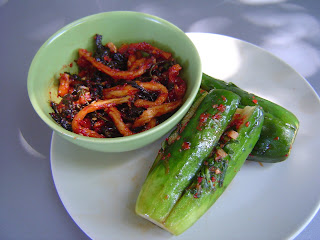Squirrel Sours call for a base spirit,
lemon or lime juice,
and crème de noyau or another nut-flavored liqueur.
~ Gary Regan
The Joy of Mixology
lemon or lime juice,
and crème de noyau or another nut-flavored liqueur.
~ Gary Regan
The Joy of Mixology
 Squirrels have been scampering about the attic of my mind. Red ones, gnawing the wiring and chattering away when work should be claiming most my concentration. My savior, come to evict them, is a single bush-tailed rodent from my childhood. The apron-clad Miss Suzy, from Miriam Young’s 1964 children’s book of the same name, has inspired a stiff adult beverage laced with a seductive cordial made of sugar, brandy, and otherwise throw-away peach pits.
Squirrels have been scampering about the attic of my mind. Red ones, gnawing the wiring and chattering away when work should be claiming most my concentration. My savior, come to evict them, is a single bush-tailed rodent from my childhood. The apron-clad Miss Suzy, from Miriam Young’s 1964 children’s book of the same name, has inspired a stiff adult beverage laced with a seductive cordial made of sugar, brandy, and otherwise throw-away peach pits.In Young’s book, Miss Suzy, the homey squirrel so skilled in the domestic arts, cooks and cleans in her tree house, enjoying the starry skies. Short version: A band of bad red squirrels runs her out and trashes the place. She bivouacs in a dollhouse within a nearby attic where, while cleaning, she finds a box of toy soldiers. The soldiers, smitten by her and outraged at the bastard red squirrels, muster arms and chase off the interlopers. Miss Suzy moves back to her old digs and her starry skies.
As a child, I adored the story. Like my nephew after me, I loved reenacting the part of the red squirrels (one gets to throw—if not actually break—things). I’d largely forgotten it, however, until I concocted a batch of homemade crème de noyau…and orange bitters kingpin Gary Regan lurched into the picture.
In The Joy of Mixology (2003), Regan offers a typology of alcoholic drinks, categorizing them by easy-to-remember components. Regan posits a new class based on nut liqueurs, most notably Hiram Walker’s luridly red crème de noyaux, a liqueur used most famously in a saccharine little tonsil varnish named a Pink Squirrel.
My noyau is not red. It’s a light amber that—from the looks of it—could pass for honey syrup.
 Ah, but smell: an immediate aroma of marzipan spiked with notes of peach and vanilla. Regan would call this a New Jersey Squirrel. I classed it up a bit by ditching the red and giving it a less industrial flavor. While the noyau tantalizingly hits sweet notes of...something else...in the drink, it remains solidly an applejack sour.
Ah, but smell: an immediate aroma of marzipan spiked with notes of peach and vanilla. Regan would call this a New Jersey Squirrel. I classed it up a bit by ditching the red and giving it a less industrial flavor. While the noyau tantalizingly hits sweet notes of...something else...in the drink, it remains solidly an applejack sour.Miss Suzy Cocktail
2 oz Laird’s 100-proof Apple Brandy
1 oz homemade crème de noyau
1 oz fresh lemon juice
Shake with ice. Strain into a cocktail glass. Garnish, if desired, with a single brandied cherry and a sink of brandied cherry syrup.
An uncomplicated cocktail going into regular rotation over at the Forge.
.




